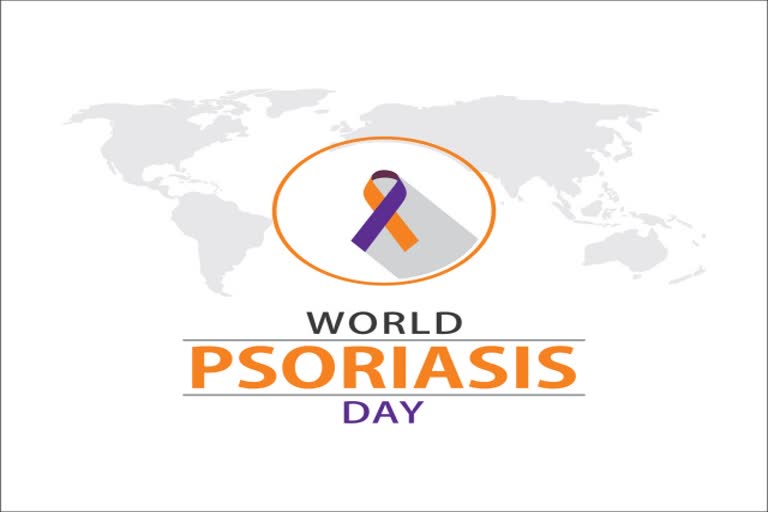Minor skin inflammation and rashes are common. However, if there are white scales and red bumpy patches on the skin, which may sometimes even crack and bleed, it can be a cause of concern. Such a condition is called Psoriasis, which is a skin disorder. The condition is lesser known and therefore, to sensitize the public across the globe about the same, every year on 29th October World Psoriasis Day is observed. It acknowledges more than 130 million people with psoriasis and psoriatic arthritis around the world. The theme of the day this year is ‘Informed’.
What Is Psoriasis?
The National Psoriasis Foundation explains, “Psoriasis is an immune-mediated disease that causes inflammation in the body. There may be visible signs of the inflammation such as raised plaques and scales on the skin. This occurs because the overactive immune system speeds up skin cell growth. Normal skin cells completely grow and shed (fall off) in a month. With psoriasis, skin cells do this in only three or four days. Instead of shedding, the skin cells pile up on the surface of the skin. laques and scales may appear on any part of the body, although they are commonly found on the elbows, knees, and scalp.”
Furthermore, the inflammation caused by psoriasis can also affect other parts of the body and result in related health conditions like Psoriatic Arthritis. 1 in 3 people suffering with psoriasis have the chances of developing psoriatic arthritis. This causes pain stiffness and swelling in the joints.
Psoriasis can affect people of any gender, age or ethnicity. However, it is more common in young adults. Psoriasis is not contagious and an early treatment can help manage it better.
What Causes It?
This skin disorder is known to be associated with the body’s immune system as well as genetics, which means it may run in the family. The International Federation Of Psoriasis Associations states that In people with psoriasis, the immune system is mistakenly "triggered" causing skin cells to grow too fast. The rapidly growing cells pile up in the skin's top layers, leading to the formation of lesions on the surface.
Types Of Psoriasis
There are various types of psoriasis occurring on different parts of the body. Some of the common locations are genital, hands, feet and nails, face, scalp and skin folds. The National Psoriasis Foundation states the following types:
- Guttate Psoriasis
Guttate psoriasis affects roughly 8 percent of people living with psoriasis. Signs of guttate psoriasis include small, round, red spots caused by inflammation. Guttate psoriasis often appears on the arms, legs and torso; however, it can affect any area of the body. - Pustular Psoriasis
Pustular psoriasis affects about 3 percent of people living with psoriasis. Symptoms include pustules (white, pus-filled, painful bumps) that may be surrounded by inflamed or reddened skin. Pustular psoriasis may appear only in certain areas of the body, such as the hands and feet like PPP, or it may cover most of the body. - Plaque Psoriasis
Plaque psoriasis is the most common type, affecting up to 80 percent of those with psoriasis. Plaques can appear anywhere on the body as raised patches of inflamed, itchy and painful skin with scales. For some people, the skin may be red with silvery white scales. For others, plaques may look more purple. This may depend on the skin type of the individual. These plaques most often appear on the scalp, knees, elbows, and in or around the belly button and lower back. However, it can affect any area of the body. - Inverse Psoriasis
Inverse psoriasis affects one-quarter of people living with psoriasis. Signs of inverse psoriasis include inflamed deep-red skin that is smooth and not scaly. Inverse psoriasis affects skin folds in the body such as underarms, under breasts, in the genital area and buttocks. It can cause severe itching and pain and can be worsened by sweat and rubbing in these areas. - Erythrodermic Psoriasis
Erythrodermic psoriasis is rare, affecting about two percent of people living with psoriasis. This type of psoriasis can cause intense redness and shedding of skin layers in large sheets. It often affects nearly the whole body and can be life-threatening. Other symptoms include severe itching and pain, changes in heart rate and temperature, dehydration and nail changes. It is important to see a health care provider immediately during an erythrodermic flare.
Treatments
Psoriasis is a chronic condition but can be controlled with the help of proper treatment. Although there is no curative treatment for psoriasis, once diagnosed, its symptoms can be managed. Treatments often include the use of topical creams, light therapy and oral medications or injections, depending upon the symptoms and severity of the condition. The treatments may be either used individually or in a combination.
Therefore, an early diagnosis of psoriasis can help in controlling the condition from worsening. One must also know about certain things that can trigger psoriasis, such as stress, alcohol, foods, allergies, etc. Consult a skin specialist as soon as the symptoms are presented.



